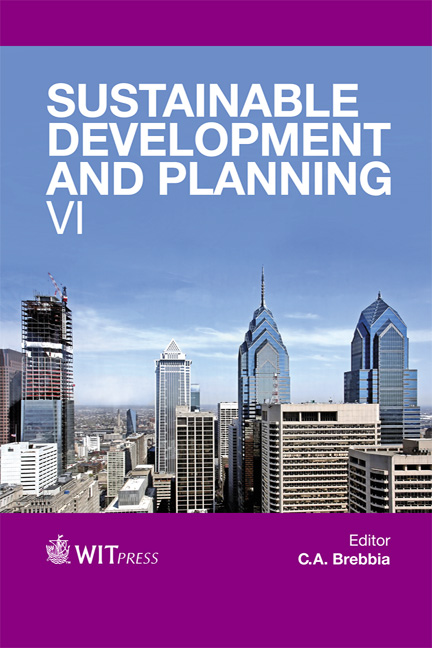Identification Of Homogeneous Areas From Urban-environmental Vulnerabilities: La Plata, Buenos Aires, Argentina
Price
Free (open access)
Transaction
Volume
173
Pages
13
Page Range
87 - 99
Published
2013
Size
2,985 kb
Paper DOI
10.2495/SDP130081
Copyright
WIT Press
Author(s)
J. Esparza, G. Viegas, I. Martini
Abstract
The urban growth of recent decades has created a significant imbalance between the environment, the territory and its inhabitants. This process therefore results in environmental issues such as pollution, overcrowding, excessive accumulation of debris and flooding of urbanized areas, among others. In this paper, the environment and the perception of the people (through surveys), are unmeasured and located in the territory, in order to recognize common ground between the three and to identify areas of urban-environmental vulnerability (AU-AV).
It explains a technical-instrumental system, developed from a relational methodology of information, forming a body of data with which to identify the issues raised. In this case, the analysis information, allowed discrimination: (i) the geographical location of the perception of the people; (ii) the degree of influence of territorial and environmental variables; (iii) identification of areas which are affected by this influence. Recalling that, given the complexity of collision, we must work from methodological triangulation, where information must respond to quantitative and qualitative methods whose implementation can be independent or combined.
The Inverse Distance Weight (IDW) interpolation method was used, pertaining to the program Arc Gis 9.3. This method incorporates the information of each survey territorialized (as information points) and calculates the value of its attribute depending on the information of the surrounding points, which allow for obtaining graphical results (maps). The maps have been a key figure input to identifying these areas. Variables submitted for appraisal of the perception of people, allowed us to obtain and identify certain detailed issues as intrinsic directionality between the response and the observed and causal territoriali ation of them.
Keywords
urban/environmental vulnerability, technical/instrumental system, graphical results





